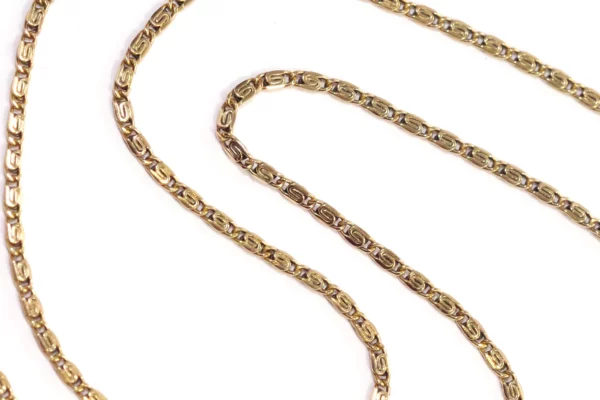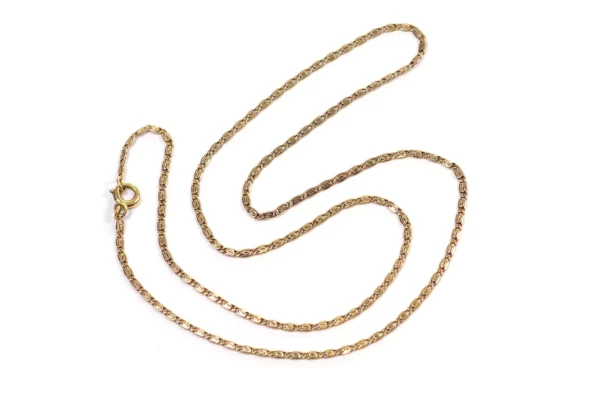Art Nouveau jewelry
50 Products
-
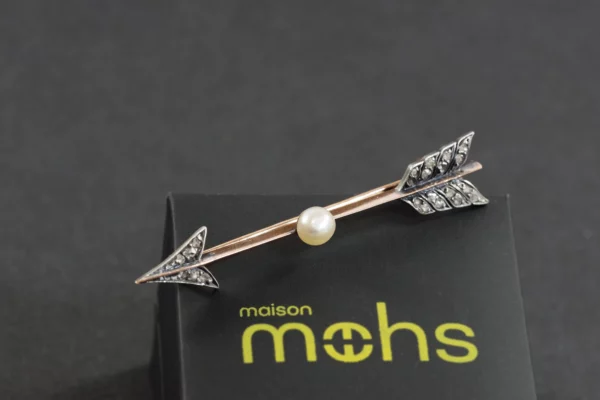
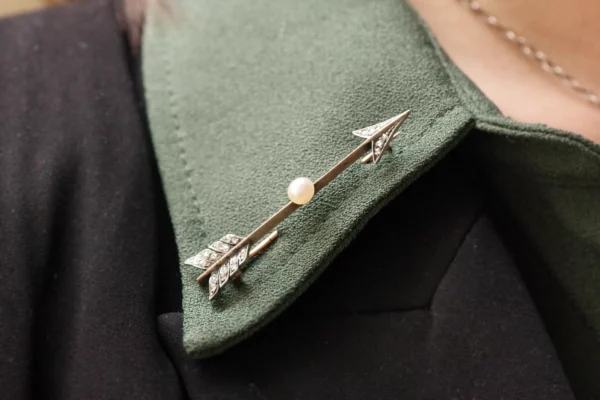 600,00€
600,00€Edwardian diamond pearl arrow brooch in 18 karats rose gold and silver. Brooch featuring an arrow with 22 diamonds on the tip and tail, and a fine pearl on the shaft (diameter approx. 4.9 mm). Antique brooch, late 19th – early 20th century.
Partially inscribed owl hallmark (French State hallmark for 18 karat gold).
Dimensions: 10 x 52 mm
Estimated total diamond weight: 0.11 caratCondition: light scratches and oxidation
Weight : 3.75 gr
-
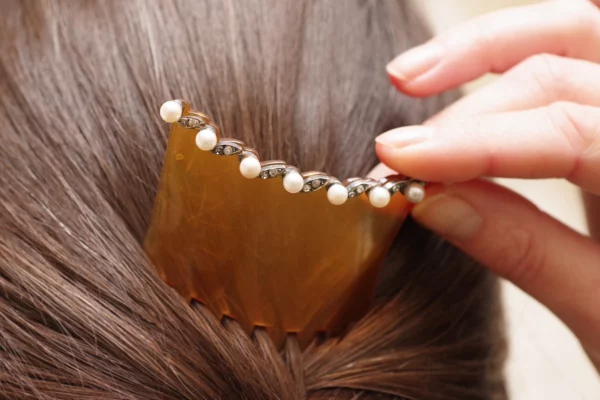
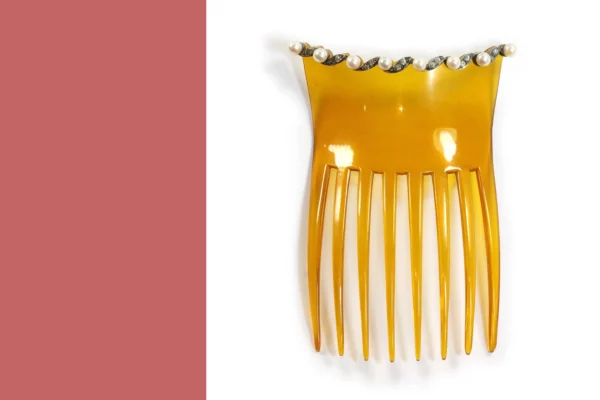 450,00€
450,00€Edwardian wedding pearl hair comb in silver (800). Large antique bun comb with eight teeth in blond tortoiseshell, decorated with a silver leaf motif, set with rhinestones imitating diamonds alternated with eight cultured pearls. Antique chignon comb, ideal as a wedding hair accessory. Circa 1900, France.
Boar’s head hallmark (french state hallmark for silver), goldsmith’s hallmark illegible.
Dimensions: 11 x 7 cm
Condition: small scratches
Weight : 16,71 gr
-
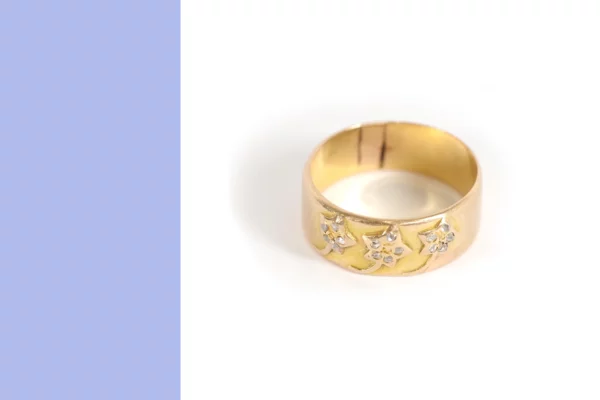
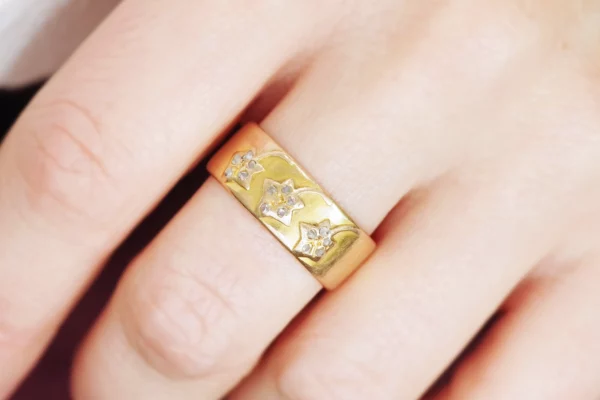 660,00€
660,00€Large Art Nouveau wedding band in 18 karat rose gold (750). Large antique wedding band decorated with three ivy leaves in relief, set with 15 rose-cut diamonds. Antique wedding band, circa 1900.
Owl hallmark (French State hallmark for 18 karat gold).
Finger size: 58 UE or 8.25 US
Ring width: 7 mm
Condition: old setting, usual wears
Weight : 6 gr
-
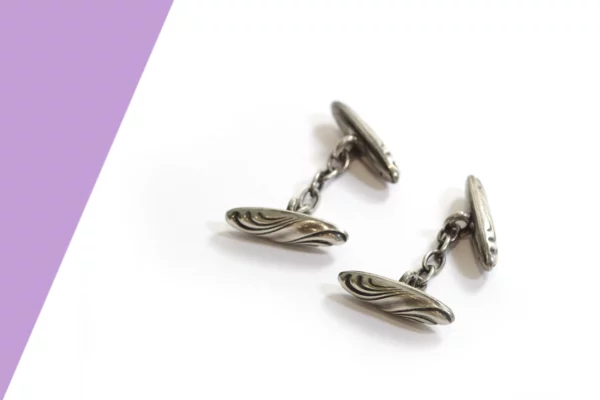
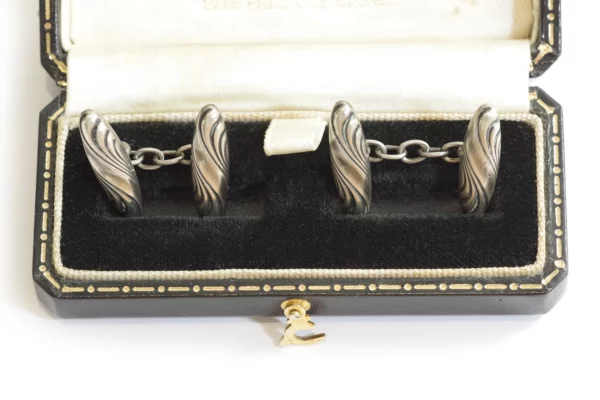 160,00€
160,00€Art Nouveau silver cufflinks. Pair of oblong cufflinks decorated with sinuous wave motifs. These motifs are typical of the Art Nouveau period. The buttons are linked by a fine chain. Pair of cufflinks, men’s jewelry, circa 1910, France.
Boar hallmark (french state hallmark for silver) and illegible goldsmith’s hallmark.
Button dimensions: 19.5 x 5.5
Condition: oxidation and scratches from use
Weight : 3.92 gr
*The antique box is not sold with the jewel*
-
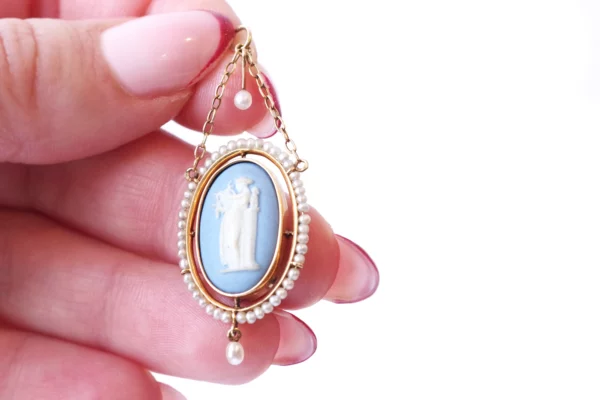
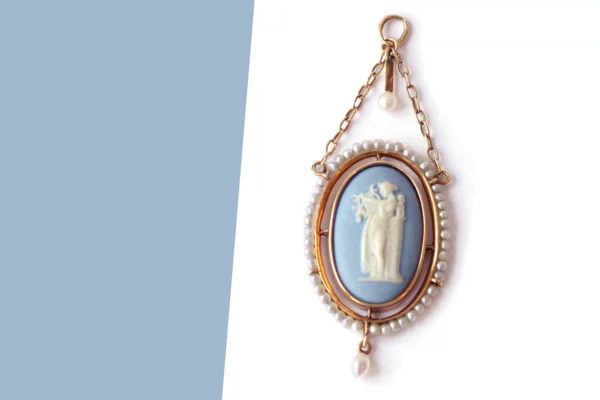 680,00€
680,00€Antique Wedgwood jasperware pendant in 18k gold (750). This piece features a central plaque of blue and white ceramic, also known as “Jasperware,” made in a cameo style. The depiction shows a profiled woman dressed in antique attire, holding a lyre, leaning against a column. The Jasperware plaque is signed “Wedgwood” on the reverse. It is framed in gold and natural pearls. The pendant suspends two natural pearls as pendants at the top and bottom. Pendant from the early 20th century, France.
Eagle head hallmark (french state hallmark for 18 karat gold), Wedgwood mark
Dimensions (including bail): 45 x 28 mm
Plaque dimensions: 17 x 10 mmCondition: The white is slightly yellowed on the plaque
Weight: 2.58 gr
Learn more: The Wedgwood manufacture, founded in 1759 by Josiah Wedgwood, is renowned for its high-quality ceramics, particularly fine pottery and porcelain. It is famous for its artistic and technical innovation, including the development of “Jasperware,” characterized by delicate patterns and vibrant colors. Wedgwood played a significant role in the ceramic industry in England and has continued to thrive as an iconic brand over the centuries.
-
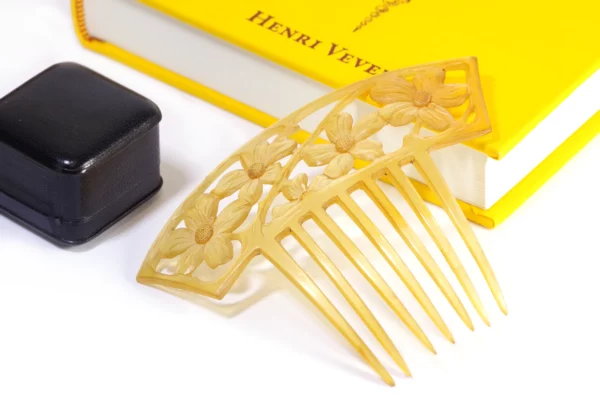
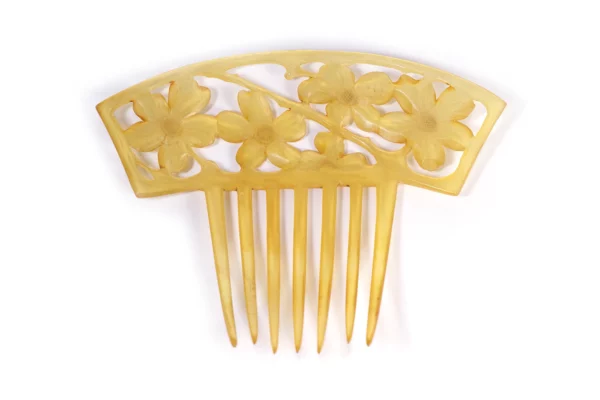 400,00€
400,00€Large Art Nouveau horn comb. Large Art Nouveau seven-tooth comb in blond horn with floral decoration. It depicts a cherry blossom branch, a very common motif in the Art Nouveau period, influenced by Japanese art. Chignon comb signed E. Birkel, circa 1900.
E. Birkel signature.
Height : 10.5 cm
Width : 13.5 cmCondition : wears of use
Weight : 19 gr
-
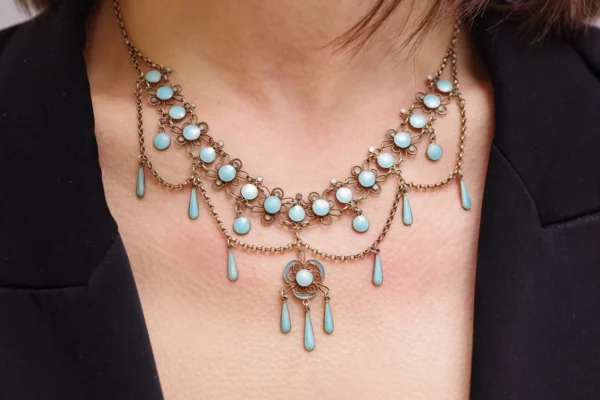
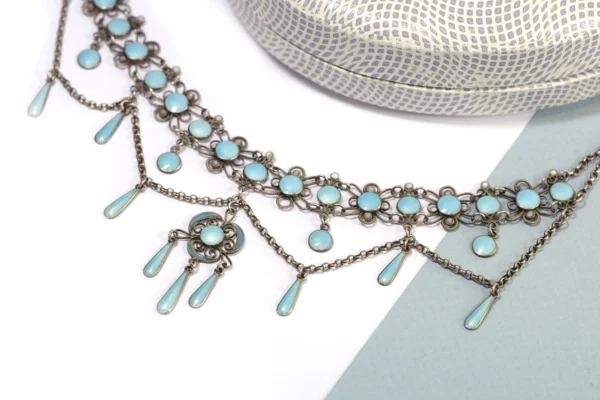 600,00€
600,00€Marius Hammer Skønvirke necklace in silver. Art Nouveau “drapery” necklace, composed of a line of sky-blue and white enameled elements with filigree decoration, holding four linked chains decorated with enameled pendants. In the center, a three-lobed element in plique a jour enamel completes the composition and holds three drops. The necklace closes with a fine bayonet clasp. Attributed to Norwegian Art Nouveau jeweler Marius Hammer. Art Nouveau necklace, circa 1900.
Length: 43.5 cm Dimensions of central elements: 16 x 5.5 cm
Condition: slight oxidation, two metal rings, small white enamel chips
Weight : 18.56 gr
A similar model of this necklace is listed at Tadema Gallery, London. : click here
Precision: Skønvirke is the term used to define the Art Nouveau or Arts & Crafts period in Norway. The period spans from 1900 to 1925.
-
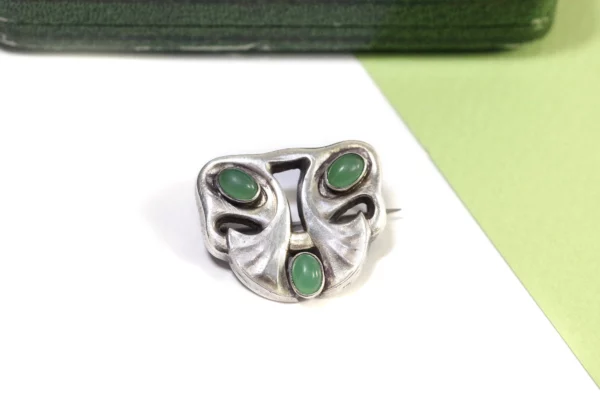
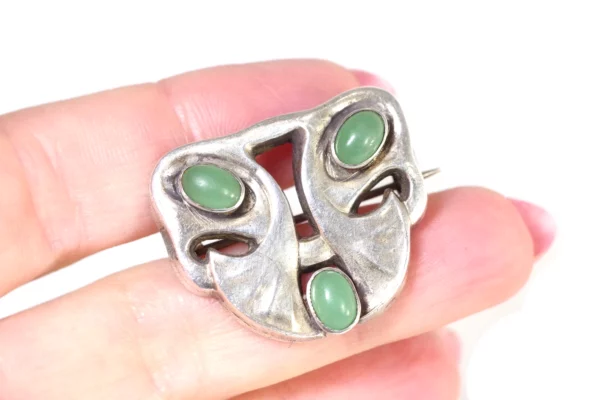 500,00€
500,00€Jugendstil silver brooch. Brooch in silver set with light green glass cabochons. Art Nouveau brooch, Jugendstil period, circa 1900, School of Pforzheim, Germany.
Registered hallmark and weevil hallmark.
Dimensions: 30 x 25 mm
Condition: scratches from use
Weight : 7.34 gr
*The antique box is not sold with the jewel*
Learn more: The city of Pforzheim specializes in the creation of Jugendstil jewelry (Art Nouveau movement in Germany), drawing inspiration from French jewelry, most often crafted in silver and set with cabochon semi-precious stones. These jewels were more accessible than the precious material jewelry of the French Art Nouveau period. Theodor Fahrner, Georg Kleemann, and the firm Carl Hermann & Speck are the most significant creators of this movement in Germany.
-
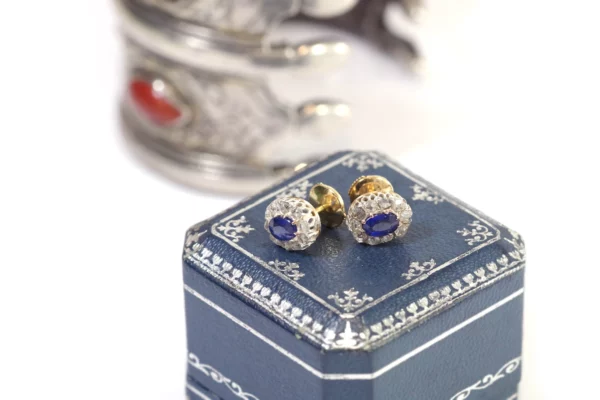
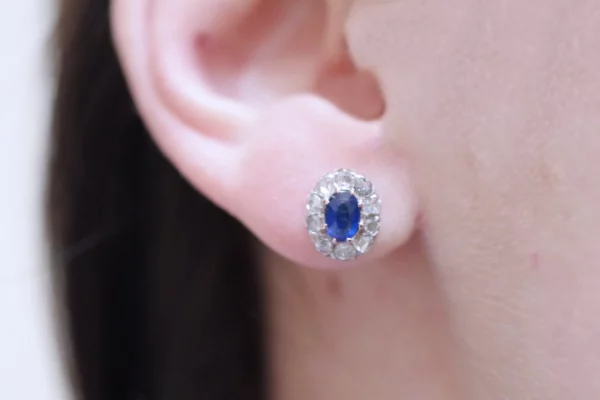 630,00€
630,00€Cluster diamond stud earrings in 18-karat yellow gold (750) and silver. Pair of diamond stud earrings, in daisy shape, centered with a blue imitation stone (garnet/glass doublet). Antique earrings, circa 1900.
Hallmark 750 on Alpa clasps.
Dimensions of the motif: 10.5 x 8.5 mm
Note: Secure Alpa closure system (later addition) Condition: Signs of wear and scratches
Weight: 2.86 gr
*The antique box is not sold with the jewel*
-
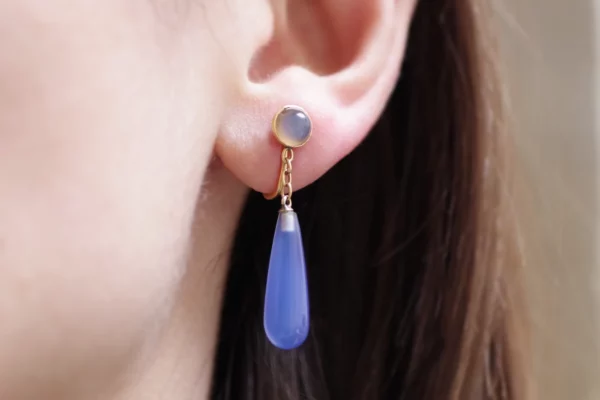
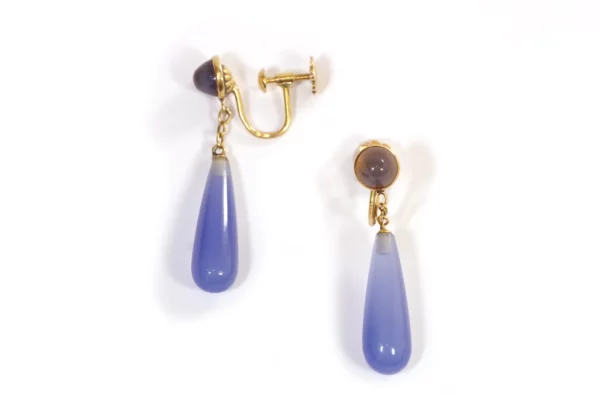 560,00€
560,00€Edwardian blue chalcedony earrings in 18-karat yellow gold (750). Long earrings set with a cabochon and a blue-tinted chalcedony drop. The reverse of the clasp is decorated with a flower. Clips earrings from the early 20th century., Edwardian period.
Owl hallmark (french state hallmark for 18 karat gold)
Dimensions: 38 x 7 mm
Note: for non-pierced ears, clip earrings.
Condition: Fine scratches from use, small traces of tin at the back.Weight: 5.66 gr
-
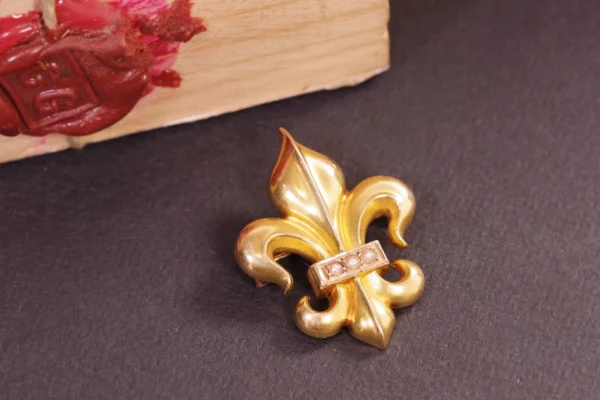
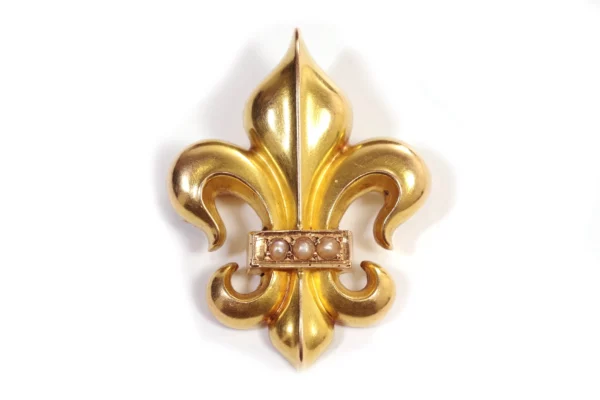 680,00€
680,00€Fleur-de-lis gold brooch in 18k (750) hollow gold. Brooch in the shape of a fleur-de-lis, adorned with three fine pearls in a cartouche.
France, antique brooch circa 1900.
Eagle head hallmark (french state hallmark for 18 karat gold)
Dimensions: 35 x 28 mm
Condition: signs of use
Weight: 4.29 gr
Symbolism: The lily has been a symbol of royalty for centuries. The fleur-de-lis is believed to have appeared for the first time on the scepter of Charles the Bald (823-877), the grandson of Charlemagne. The French royalty, therefore, chose this emblem just as other reigning European families chose the eagle, lion, or leopard. For centuries, until the revolution, the fleur-de-lis became a heraldic symbol on monuments, currency, clothing and tapestries, sculptures, statues, art objects, paintings… To express their opposition to monarchy and Catholicism, the revolutionaries destroyed numerous sites and artworks marked by this symbol.

